
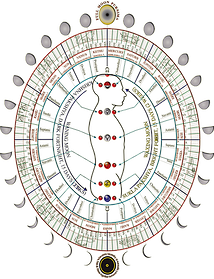
|
|
|||
|
|
|||
|
|
|||
|
|

|
|
||
|
|
||
|
|
||
|
|
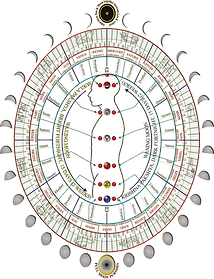


|
|
|||
|
|
|||
|
|
|||
|
|

|
|
||
|
|
||
|
|
||
|
|

Initiation in Sanskrit is called “diksa”. The word diksa is composed of two syllables: “dik” and “ksa”. dik means direction and ksa means sky or heaven. In other words, diksa is symbolic of the direction to heaven or opening your third eye.
Kriya Yoga is normally transmitted or taught by a competent master to anyone wishing to learn. The initiation plays a very important role in all areas of the adherent’s life and, of course, in the spiritual field.
Officially, the minimum age for receiving initiation is twelve years. However, a child under twelve can still be initiated if he or she has a strong enough desire.
At the instant of physical birth, only the body is born. The mother’s life force continues to sustain the body at this time, just as it did when the baby was gestating in the womb.
When breath enters the body for the first time, this is equivalent to “physical diksa”. At this point life is conceived within hiranyagarbha, inside the cranium. Thus, the body is born and thereafter life is conceived, but because there is no awareness in the baby if its causal root; one could say that one’s “true life” has not been born yet.
During the first breath, God the Father breathes (descends) into the body with God the Son. Three times he inhales, three times the body exhales. After the third exhalation, the new life inhales and exhales by itself, however by now it has already lost awareness of God the Father. During the first inhalation the new life becomes aware of the sense of smell (that of its mother). This is then followed by the sense of taste (the desire for feeding); then the sense of sight (of the mother); then the sense of touch (as the baby is held or fed) and finally the sense of sound or illusion as the baby bonds and identifies itself with its mother.
This physical body, continuously “runs” towards death. The physical body cannot run towards immortality, because immortality does not exist at the physical level. Despite this, it is in this physical body that the deathless child is conceived.
Since the body is not capable of understanding this breath we must be born a second time, in order to realize who we are and to understand the significance of prana (life).
Jesus said:” You are born of the flesh; you must be born again of water and of spirit, with the breath of fire (breath of life)”. We are born of the flesh, which is why we are attached to it and we are born from sexual pleasure, therefore we crave (are attached to) sexual pleasure. When a problem arises on the emotional or on the sexual level, we often feel that our world is falling apart and that our life has been dealt a heavy blow. Sexuality is only one of the causes of physical life.
&We must be born a second time, not through sex, nor through a mother’s womb, but from the womb of God, the Father; in other words, from hiranyagarbha, above, deep in the cranium, through water and spirit.
Thus initiation is a direct reference to the second birth (dvija), giving access to knowledge. dvi means twice and ja means “new manifestation of life”. In this way we are able to open and purify each of our chakras , thus liberating our karma.
As an example, consider the butterfly. In Sanskrit, the butterfly is called prajapati, the creator. The butterfly is initially born as a caterpillar. The caterpillar must be born again in order to be transformed.
The first six years of a person’s life are spent in descending dakshinayana and the following six in ascending uttarayana. This twelve year period results in the completion of one inner solar cycle or 360 degrees in the physical spine. Normally a child starts general education at the end of dakshinayana or six years. This is initiation for general education. Likewise, the person can normally take spiritual initiation after completion of uttarayana or at the minimum age of twelve years; in other words after the completion of one solar cycle.
A person will come to know of the conception and birth when he arrives at the causal level through meditation. This is why, often, at the time of Kriya initiation, it is mentally impossible to comprehend the real meaning of spirituality. Through the practice of meditation, when you arrive at the final state or result of meditation, then the person “becomes”, and at this point, there is no question of understanding or realization, nor any doubt.
On the day of initiation, the master symbolically purifies the centers, removes blockages and shows the way to the student who then feels the divine vibration. Due to preconceived ideas, initiation is often misunderstood. It cannot be understood on an emotional level, although that is where most initiates feel it. It is in fact a very subtle process, deep in effect and meaning. Symbolically, one removes all karma, gets the seed (bija) and then when everything has been cleansed, one establishes one’s Soul in the Divine Kingdom. This is achieved by the energies (effort) of both the master and the disciple. When all this is understood correctly, then the influence is felt at an objective and very deep level. It should be experienced with calm and spontaneous determination, with divine inspiration and humility and not with stubborn or egoistic rigidity.
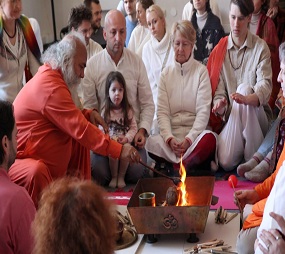
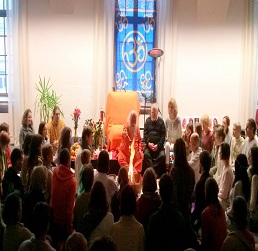
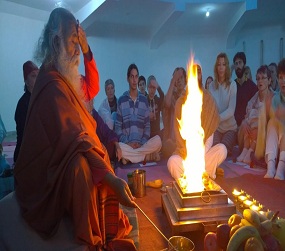
The initiation should always be received from a realized master. With concentration, the student feels the divine vibration and then their life shall be blessed. Thereafter the students must practice and always remain above.
The Guru (your Soul, God the Son) resides in the South (dakshina) and on the front side of agnya chakra (sixth chakra). The guru will bring you up, from dakshinayana to uttarayana. This means from the beginning of the Southern region (descending) to the end of the Northern (ascending). This is why we must go up from the South to the North, from the lower part of the body to the top. The word uttara means both the “North” and “the answer”. The word dakshina also has two meanings. On the one hand, it means the “South” and on the other hand it means “donation”, the offering that is given during initiation. The offering consists of our three bodies (physical, astral and causal). dakshina is the offering to the Guru, the Soul. Therefore, we must allow the divine to rise and we must offer everything to the Guru (the Soul), which is in the cranium.
As mentioned before, in Sanskrit, initiation is called diksa. This is understood as da for donation, and ksa for the vacuum, void and purity; or also as direction (dik) and ether (ksa). Our direction is to go towards heaven, the void, the vacuity. There we find the Guru who is also the answer.
It is not so much that the master gives, but rather that the disciple parallels himself with the master. Thus, the disciple is always posing a question and the master has to answer it.
Initiation plays a very significant role in the life of the beginner. The main aim of initiation is to bring the disciple from life to Soul, from swara to iswara, from darkness to light. The role of the master here is as a bridge to connect and open the third eye. This is the main aim of initiation.